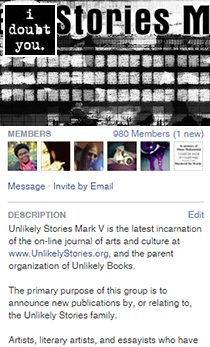Why the War Movie Matters
All Quiet on the Western Front is a powerful and affecting picture. I’ve never read the novel by Erich Maria Remarque. I had never seen the film, which debuted in 1930 on the cusp of the rise of National Socialism in Germany. This is relevant because the story follows several young German soldiers during the Great War, otherwise known as World War One. I knew only in advance of watching the film that the novel and movie have the reputation of expressing an anti-war theme. To this end, the Universal Pictures movie, the first film based on a work of fiction to win the Academy Award for Best Picture, displays effects—so-called special effects—with perfection.
The stark, brisk and penetrating black and white movie begins with a forewarning in words—taken almost verbatim from Remarque’s novel:
“This film is to be neither an accusation nor a confession, and least of all an adventure, for death is not an adventure to those who stand face to face with it. It will try simply to tell of a generation of men who, even though they may have escaped its shells, were destroyed by the war.”
All Quiet on the Western Front begins with the incessant sound of horns in military marches, which, gradually, comes to muffle a classroom led by a fiery teacher. The audience sees only his mouth moving and his passionate body language. Framed by two large, open windows, which it becomes clear are almost certainly left open as part of the instructor’s theatrical lesson plan, the classroom is a propagandistic launchpad for young male students, who, one by one, imagine themselves going to war for the sake of the fatherland as their teacher riles them into a frenzy of sacrificing their lives for the state.
When the camera pulls back by the end of the sequence, the classroom has been emptied—littered with papers—of all young men and minds; the room in which to learn is vacant. Everyone is going to war.
So begins the movie’s dramatic lesson in altruism—the doctrine that helping others is one’s highest moral purpose—as the root of war. The point is subdued, not made explicit, in the cinematic story. The band of local young men unites and trains under their former postman, an emphatically officious leader, which becomes a key character point. Soon, they deploy for first combat. This, too, is framed by a large window and All Quiet on the Western Front unequivocally depicts war as a logical byproduct of pre-war thought and action. I couldn’t help but think of the U.S. media’s and government’s incessant, recent crusades for America to go to war for the sake of duty to help others in Rwanda, Bosnia, Iraq, Syria and, recently, Ukraine.
The archly titled All Quiet on the Western Front dramatizes trench, omitting chemical, warfare with dirt, rumbling and smoke in the distance accompanied by the unceasing sound of whistling, incoming bombs. Men scream as they charge with bayonets and fall in fields with bombs going off one after the other. Hand-to-hand combat follows. The bombing—an endless series of explosions—exhausts the German army’s second company of young (and a few older) soldiers. The contrast and message is clear: relentlessly visceral deaths of young men in combat follow their early, fleeting glorification of war for the sake of fulfilling a duty to fight for the collective.
Foreshadowed by one boy’s blinding, the movie’s first major character pivot stems from the character Franz. He’s lying in his deathbed with treasured boots beneath the bed. The story’s main character, Paul (Lewis Ayres), strives to comfort Franz when mates visit Franz while on leave. Amid nonstop rain, with a wall blown out, Franz fades. The camera focuses on his boots, which get passed on. One by one—as the audience meets fresh, handsome young men—soldiers die in Franz’s boots. This explicates the scale of death during the Great War.
The residual effect on Paul and his comrades grinds down and traumatizes them. Today, this condition is reduced to an acronym (PTSD) in a way similar to how thought, judgment and criticism is reduced to numerical aggregates (“Rotten Tomatoes”). It’s a detachment which reflects the attempt to deny, abnegate and erase facts of reality. All Quiet on the Western Front portrays the root, trauma and drama of war. It does so with a particular if subtle philosophical plot orientation and emphasis—with precision and concision, lasting longer than the millisecond of a fast cut—and it prolongs suffering to show, not to shock, the audience that, while duty drives youths to war, the war pummels despair and vacancy into man. The result is simply death.
Spent, trembling and hiding in a ditch, caked in dirt, Paul bargains and comes to peace with himself. Holding his helmet on the sharp end of his bayonet, he tests the battlefield, eventually learning to appreciate the supreme value of his own life. The scene in which Paul renders water to a dying enemy soldier under the flares’ light is unforgettable.
Valuing a single, human life is the point of All Quiet on the Western Front. The month and year are September, 1917. Swimming across the river to cavort and lie with French women—with a long shot on a phonograph to punctuate that the soldier craves artistic nourishment through music—precedes yet another amputation. All Quiet on the Western Front dramatizes the loss of limbs in war (long before the overestimated The Best Years of Our Lives) until, finally, Paul goes home on leave as the boy’s butterfly collection and sick mother come into play.
The third act begins with what’ll become Paul’s redeeming moment: entering the same classroom where he was first indoctrinated, lulled into romanticizing war and being an altruistic soldier. Paul decides to confront the teacher and new recruits and speak the truth. If it’s not exactly right in every sense, because Remarque lacks the cohesive philosophy to express altruism as what Ayn Rand called the roots of war, it’s nevertheless an indelible character-plot point.
“I’m not much to have left,” his weary, broken-nosed mate says upon Paul’s return to battle, after Paul observes that the same boys who rejected his plea enlist themselves into the schoolteacher’s statist propaganda anyway and will comprise his new company of comrades. Bearing the burden of a dead man on his back brings altruism into focus as All Quiet on the Western Front comes to its end. Paul’s eyes reflect the haunted deadness and shellshock—the Great War’s term for post-traumatic stress disorder aka battle fatigue—of having renounced and lost everything he loves about his own life.
In a horrifying scene of elegy, wonder and the ghosted, glassy-eyed sense of knowing as he catches sight of a butterfly, Paul taps out on his terms, fulfilling the book’s and movie’s title. New young men’s faces turn—one by one by one—to look backward as a field of crosses underlays on screen. It’s a gentle plea to the audience for retrospect.
The music stops after the sound of a single sniper’s bullet. The screen goes black. Then comes The End. Restored by America’s Library of Congress in 1998, the year of Steven Spielberg’s seminal World War Two movie Saving Private Ryan, written by Lewis Milestone, who won an Oscar for Best Director, with Maxwell Anderson, Del Andrews and George Abbott, All Quiet on the Western Front pegs altruism as the root of war.

Scott Holleran's writing has been published in media from the Advocate to the New York Times. Mr. Holleran interviewed Henry Reese, the 75 year-old scholar who saved Salman Rushdie from an assassin and he wrote the award-winning article “Roberto Clemente in Retrospect: Why Did ‘the Great One’ Go Down?” Scott Holleran’s short stories are featured in various anthologies and literary journals. Listen to him read his fiction at ShortStoriesByScottHolleran.substack.com. Read his non-fiction at ScottHolleran.substack.com. Scott Holleran, who also dances and choreographs, lives in Southern California. Scott supports the Olivia Newton-John Foundation.


